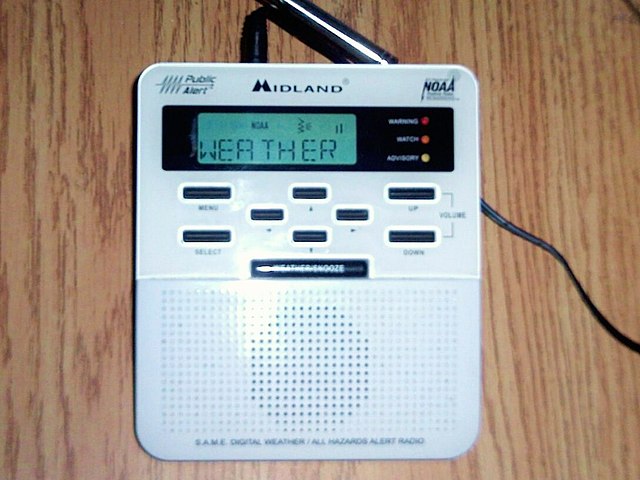A tornado warning is a public warning that is issued by weather forecasting agencies to an area in the direct path of a tornado, or a thunderstorm capable of producing one, and advises individuals in that area to take cover. Modern weather surveillance technology such as Doppler weather radar can detect rotation in a thunderstorm, allowing for early warning before a tornado develops. They are also commonly issued based on reported visual sighting of a tornado, funnel cloud, or wall cloud, typically from weather spotters or the public, but also law enforcement or local emergency management. When radar is unavailable or insufficient, such ground truth is crucial. In particular, a tornado can develop in a gap of radar coverage, of which there are several known in the United States.
F5 tornado near Elie, Manitoba, on June 22, 2007
Specific Area Message Encoding
Specific Area Message Encoding (SAME) is a protocol used for framing and classification of broadcasting emergency warning messages. It was developed by the United States National Weather Service for use on its NOAA Weather Radio (NWR) network, and was later adopted by the Federal Communications Commission for the Emergency Alert System, then subsequently by Environment Canada for use on its Weatheradio Canada service. It is also used to set off receivers in Mexico City and surrounding areas as part of the Mexican Seismic Alert System (SASMEX).
An example of a SAME alert weather radio receiver.


